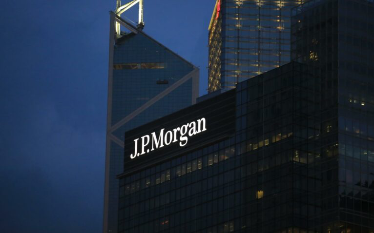
Bitcoin fell another 50% after hitting a new all-time high after experiencing wild swings for most of last year.
The price of bitcoin fell to a low of $32,000 per bitcoin in January, down from a peak of about $70,000 per bitcoin, but has rebounded recently, topping $45,000 for the first time in more than a month.
However, banking giant JPMorgan estimates that Bitcoin’s “fair value” is well below its current price and warns that Bitcoin’s “boom and bust cycle” is its biggest challenge to institutional adoption.
Bitcoin’s volatility limits its ‘fair value’
“Bitcoin’s biggest challenge going forward is its volatility.”
JPMorgan strategists wrote in a note to clients this week, first reported by Bloomberg.
JPMorgan’s calculations are based on the volatility of bitcoin versus gold – bitcoin is currently about four times as volatile as gold, which also greatly limits the “fair value” of bitcoin, which currently trades at more than The “fair value” of Bitcoin as calculated by JPMorgan.
However, if Bitcoin’s volatility spread narrows to three times that of gold, the fair value of Bitcoin’s price will rise to $50,000, roughly the same level as it is today. In the longer term, JPMorgan maintained its Bitcoin price forecast of $150,000 — a price that would give Bitcoin a market cap of $2.8 trillion, comparable to all privately held gold for investment purposes.
“With no fundamental value like commodities, stocks or bonds, Bitcoin’s price is driven by investor interest and is therefore a purely speculative asset.”
Alex Kuptsikevich, Senior Financial Analyst, FxPro
In short, its price is determined not so much by volatility as it is by popular interest. Without investor interest, it quickly loses value, and with it, it quickly recovers. The strength of Bitcoin is the declining supply growth rate and its limited nature. “
In some ways, Bitcoin’s price has become less volatile over time, which may increase its appeal to institutional investors.
“We should also note that the addition of institutional investors, the increasing acceptance of bitcoin as an asset to diversify, and the increase in cryptocurrency trading volumes have made prices less so over time volatility,” Kupckovic added.
It’s a paradox that during the 2020-2021 growth cycle, Bitcoin price climbed roughly 18x from bottom to peak, and after the previous halving, in 2016-2017, it climbed 52x. The drop in volatility has pleased corporate and institutional investors, but has struggled to please retail investors.
Retail investors love fast-moving investments to the moon, but institutional investors and corporations hate volatility because it creates huge headaches for trading and asset management, but Bitcoin can only be accepted by more mainstream financial institutions and corporations Consolidate your position, or you will inevitably be abandoned one day.

